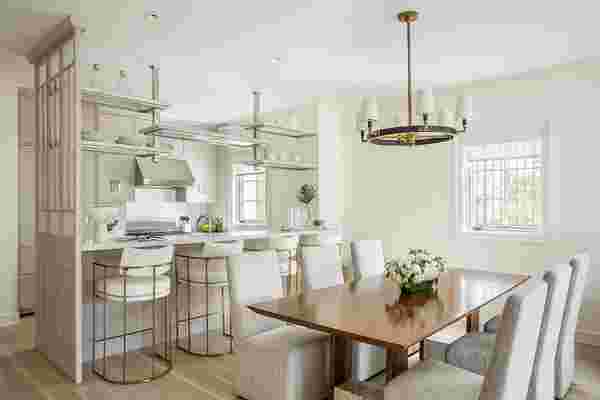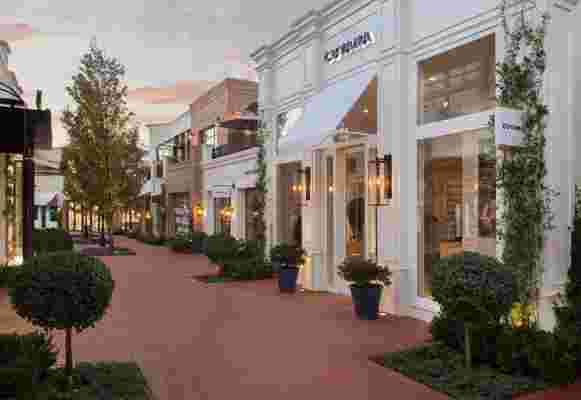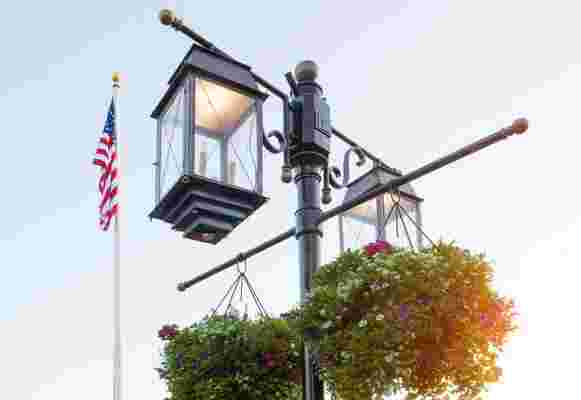July 18,2022
This New Coastal Village Was Designed to Be Picture-Perfect
by David Stewart
Twelve years ago, developer Rick Caruso began envisioning a center of town for a town that had no center: Pacific Palisades, a seaside Los Angeles community nestled between Malibu and Santa Monica that had some of the city’s wealthiest residents but little in the way of retail or restaurants. Caruso, whose eponymous company has built some of L.A.’s most successful mixed-use, open-air shopping centers—including the Grove, which sees more visitors per day than Disneyland—knew an opportunity when he saw it. He also knew a challenge.
From the start, Pacific Palisades residents made clear what they didn’t want from Caruso’s Palisades Village: a theme park. Caruso and his team held a town hall meeting in a high school gym where locals voiced concerns and the team took notes. They didn’t want cars and trucks in and out all day long. They wanted a center that meshed seamlessly with the neighborhood—something that looked as if it had developed organically over time. The team, meanwhile, had another lofty goal in mind: for Palisades Village to become the state’s first LEED Gold certified ground-up business district. “The idea was to curate, not create, a community,” says Caruso EVP of Architecture Dave Williams, “which is an important distinction. We weren’t building something for people to go to but for an existing market. But we had our own vision, too.”

The kitchen and dining area of a custom Palisades Village home. The entire village was designed with its residents top of mind.
As part of the design process, the team traveled to some of the country’s most walkable city streets, including San Francisco’s Fillmore Street and Boston’s Newbury Street, to study storefront widths, depth, frontage, and mix. They drew from the neighborhood’s “California Coastal” architecture to create a village lined with open patios, landscaped balconies, brick pavers—a first for L.A.—and street lamps inspired by those Caruso saw in St.-Tropez. Rooflines were staggered and no two adjacent buildings are designed by the same architect. A residential architect was brought in to design the façades of residence-facing storefronts while a bike share project that lets guests borrow wheels—even overnight—is enabled by a concierge program that delivers packages to their home or cars. A village green hosts community events while also featuring 77 different tree and plant species to help satisfy neighborhood concerns about light and noise.

A pedestrian-only brick lane in Palisades Village, where no two adjacent buildings were designed by the same architect.
A small-town approach also guided the selection of retailers, a mix of mostly independent, California-grown brands—more than half of them female-owned—including Elyse Walker, Rachel Zoe, and Jennifer Meyer, along with a corner market and a revival of the local movie theater. “There were many corporate brands that wanted to be in the Palisades, but it was a very strong and specific demarcation for Rick that we build something that was not commodity-driven but fashion- and style-driven—and also accessible to everyone in the community,” says Williams. “It’s not exclusive in the way that Rodeo Drive is exclusive. Everyone can afford a cup of coffee or go to a movie.”
Throughout, the developers were able to honor their commitment to sustainability, although it proved the most logistically challenging aspect as well as the most costly. “Getting all the tenants on board with our guidelines was a challenge, but we made it the number one goal, and it paid off,” says Caruso EVP of Construction Tom Veje. During construction, 120,000 cubic yards of soil were repurposed for a park nearby. The parking garage features all-LED lighting, which reduces energy by 90 percent, and EV charging for 30 cars, with the potential to scale up to 100. A village-wide photovoltaic array puts about 800,000 watts of power back into the grid every day, while biofiltration and permavoid systems drain storm water and store it under the village lawn. As a result, says Williams, “Our water usage is almost nonexistent.”

Caruso says the street lamps in Palisades Village were inspired by some he had seen while on vacation in St.-Tropez.
As they work to create the final phase—eight 1-to-3-bedroom residences currently under construction—both Williams and Veje continue to draw on their 20 years of experience working with Caruso. “We’ve seen the industry evolve and we see this project as predicting the future to a certain extent” says Williams. “And now, we believe we’re on the forefront of where retail is going: not just in terms of sustainability but in terms of smaller, more curated, local-feeling experiences.” It’s not as bold a statement as it sounds, says Veje, though in the world of mixed-use retail developments—in many ways, the modern-day town center—revolutionary all the same. Simply put, he says, “Palisades Village was built to fit in.”






